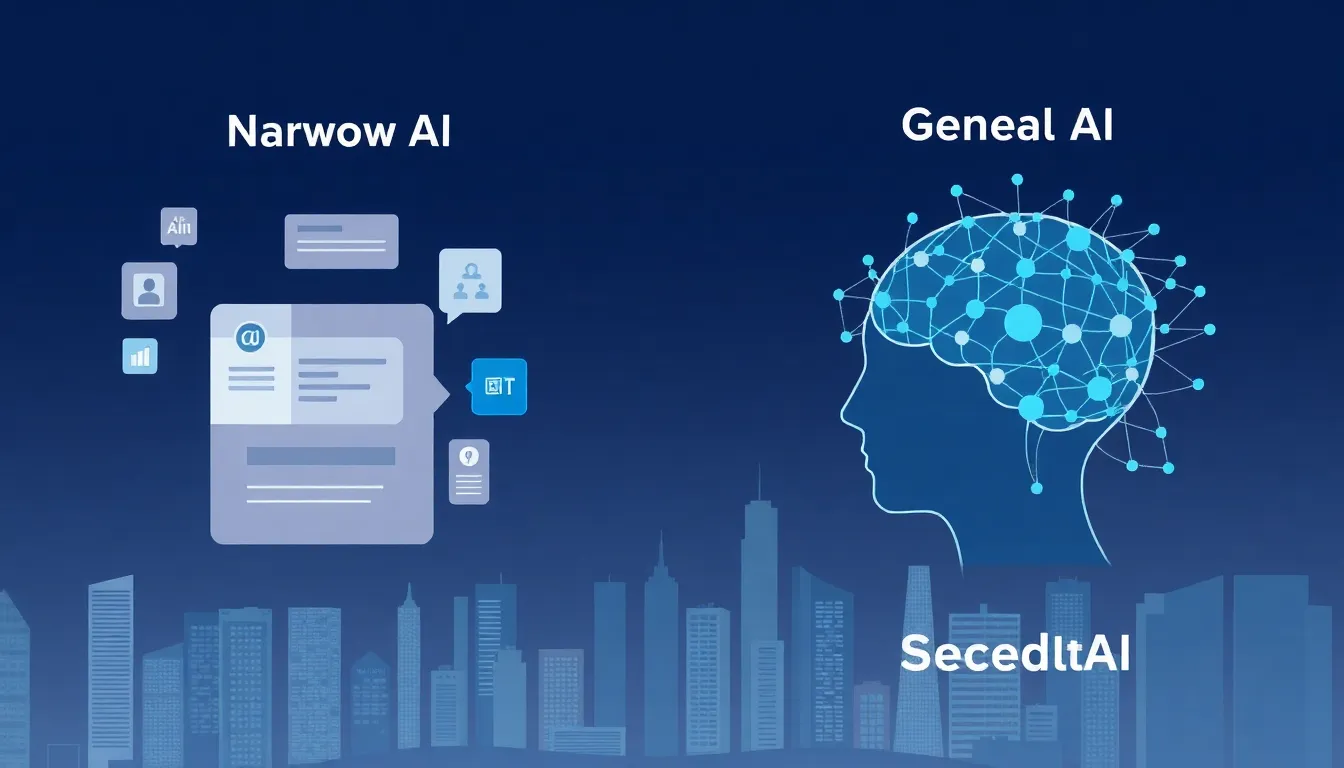Table of Contents
ToggleArtificial intelligence isn’t just for rocket scientists and tech wizards anymore. It’s creeping into everyday life faster than a cat video goes viral. From virtual assistants that can’t quite pronounce your name to algorithms that suggest your next binge-watch, AI is everywhere. But what if you’re not a tech guru? Fear not! This guide breaks down the complexities of artificial intelligence into bite-sized pieces, perfect for anyone who’s ever felt lost in a sea of jargon.
Artificial Intelligence for Dummies
Artificial intelligence (AI) refers to the capability of machines to perform tasks typically requiring human intelligence. This includes learning, reasoning, problem-solving, and understanding natural language.
Definition of Artificial Intelligence
Artificial intelligence encompasses systems that mimic cognitive functions such as learning and problem-solving. Such systems utilize algorithms and data to recognize patterns, enabling them to make decisions and predictions. Virtual assistants and chatbots exemplify common AI applications, demonstrating how machines can interact seamlessly with users. In essence, AI aims to create technologies that improve user experiences and solve complex problems.
Brief History of AI Development
AI development traces back to the mid-20th century. Pioneers like Alan Turing laid the groundwork with fundamental concepts of machine learning. The first AI programs emerged in the 1950s, focusing on problem-solving and simple tasks. Advancements in computing power and data availability fueled significant progress throughout the decades. By the 21st century, AI applications expanded rapidly, incorporating machine learning and deep learning techniques. Today, AI influences numerous sectors, from healthcare to finance, shaping the way people interact with technology.
Types of Artificial Intelligence

Different types of artificial intelligence exist, each serving specific functions and capabilities. Understanding these distinctions can clarify how AI impacts daily life.
Narrow AI vs. General AI
Narrow AI, also known as weak AI, specializes in performing specific tasks. Examples include chatbots and recommendation systems. Although it excels in its designated areas, narrow AI lacks the ability to perform outside its programming. General AI, or strong AI, refers to systems capable of understanding and applying intelligence across a broad range of tasks. In practice, general AI aims to emulate human cognitive abilities, though this level of sophistication remains largely theoretical.
Reactive Machines vs. Limited Memory
Reactive machines operate solely on the present, responding to immediate stimuli without retaining past experiences. This kind of AI excels in tasks like playing chess, where it analyzes positions but lacks memory of previous games. Limited memory AI, on the other hand, can retain historical data to inform future decisions. Self-driving cars exemplify limited memory AI, as they utilize past experiences to improve navigation and safety. By employing both types, AI systems can enhance functionality and efficiency.
How Artificial Intelligence Works
Artificial intelligence operates through various methods and technologies. Understanding these components clarifies how AI systems function in daily applications.
Machine Learning Basics
Machine learning forms a crucial part of AI. It focuses on algorithms that enable machines to learn from data. These systems identify patterns and make decisions without explicit programming. Supervised learning uses labeled data for training, allowing models to predict outcomes accurately. Unsupervised learning uncovers hidden patterns in unlabeled data, providing insights into complex datasets. Reinforcement learning employs a reward system to strengthen decision-making processes, enhancing performance over time. Each method contributes to the versatility and effectiveness of AI applications.
Natural Language Processing Explained
Natural language processing (NLP) allows machines to understand and interpret human language. This technology transforms unstructured text into usable data, improving interactions between humans and machines. NLP encompasses various tasks including speech recognition, sentiment analysis, and language translation. By analyzing grammar and context, NLP systems can generate meaningful responses. Popular applications include virtual assistants that interpret voice commands and chatbots that provide customer support. These technologies bridge communication gaps, making interactions smoother and more intuitive.
Practical Applications of AI
Artificial intelligence significantly impacts daily life and various industries, enhancing productivity and convenience. AI uses technology to simplify tasks, making it accessible to all.
AI in Everyday Life
Smart assistants, such as Siri and Alexa, help perform daily tasks like setting reminders and controlling smart home devices. These assistants rely on natural language processing to understand user commands, creating seamless interactions. Recommendation systems, seen in platforms like Netflix and Amazon, analyze user preferences to suggest films and products, tailoring experiences to individual tastes. Customer service chatbots respond to inquiries instantly, reducing wait times and improving user satisfaction. Many people benefit from AI without recognizing its presence in daily activities.
AI in Business and Industry
AI revolutionizes business practices by optimizing operations and enhancing decision-making. In marketing, AI analyzes consumer data to refine targeting strategies, boosting campaign effectiveness. Inventory management systems leverage predictive analytics to minimize waste and maintain stock levels. Manufacturing utilizes AI-driven robots for tasks that increase efficiency and accuracy, while reducing human error. Financial institutions employ AI algorithms to detect fraudulent activities, improving security. These applications showcase AI’s ability to transform various sectors, driving innovation and efficiency.
Challenges and Ethical Considerations
Artificial intelligence presents various challenges and ethical considerations that require attention. Addressing these issues is essential for the responsible development and deployment of AI technologies.
Bias in AI Systems
Bias in AI systems has become a significant concern. The data used to train AI algorithms often reflects existing societal biases, inadvertently reinforcing stereotypes. For instance, facial recognition algorithms may misidentify individuals from underrepresented groups, leading to unfair treatment. Ensuring diverse datasets during the training phase can help mitigate bias. Continuous monitoring of AI outcomes also plays a crucial role in identifying and correcting biases as they arise. Stakeholders must collaborate to establish guidelines that promote fairness and inclusivity in AI applications.
The Future of Work and AI
The integration of AI is reshaping the future of work significantly. Automation of routine tasks allows employees to focus on higher-value activities and creative problem-solving. According to recent studies, job displacement due to AI could affect millions, especially in jobs involving repetitive tasks. Emphasis on reskilling and upskilling workers becomes paramount in navigating this transition. Organizations that invest in training programs can empower employees to adapt and thrive in an AI-enhanced environment. Societal discussions about AI’s impact on employment will continue to evolve as technology advances.
Conclusion
Artificial intelligence is no longer a concept limited to tech-savvy individuals. It’s become an integral part of daily life, influencing how people interact with technology and each other. By understanding the basics of AI, anyone can appreciate its potential to enhance productivity and convenience across various sectors.
As AI continues to evolve, awareness of its capabilities and challenges is crucial. Embracing responsible development and addressing ethical concerns will shape a future where AI benefits everyone. As the world adapts to these advancements, staying informed will empower individuals to navigate this transformative landscape confidently.





